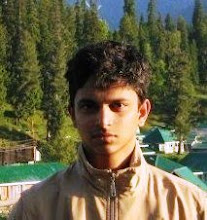Oasis have split. What will the repercussions be?
Nigel Britto
The millions who have been crying their hearts out since Brit-pop band Oasis broke up last year have reason to rejoice. Liam, the younger of the Brothers Gallagher who formed the crux of the band during its golden years, has finally given us a glimmer of what his new band, Beady Eyes, might sound like when they release their debut album sometime next year. The band's first track, Bring the light, was made available as a free download on November 10. Verdict ? Well, for starters, Liam's much-hyped Beatles influence is evident right at the beginning and continues throughout. Second, it's a clever response to the weird situation he finds himself in post the split: anything that sounded like Oasis would get attacked, and anything that did not sound like Oasis would get attacked. Bring the light is a good balancing act, yet a few fans on web forums trashed it, palpably still angry with Liam for forcing big brother Noel to resign. Numerically and statistically, there's not much difference between Oasis and Beady Eyes.
Liam is backed by Andy Bell, Gem Archer and Chris Sharrock, who formed the rest of Oasis. The only missing link is Noel Gallagher, the vocalist and lead guitarist who quit the band after a major backstage tiff last year, in which he allegedly had his guitar broken by Liam. The incident heightened the rage against the younger Gallagher, oft-despised by fans and observers for his swagger, alcoholism and drug-fuelled tantrums.
The release of Beady Eyes' single and their decision to make it a free download is unlike anything Oasis has done before. It might also raise the eyebrows of people who doubt Liam's ability to single-handedly manage the show. The first listen to Bring the light reveals a few things straight up: lyrical portions that could sometimes be described as clichêd (Baby hold on, baby come on), a stolen guitar riff (ripped from the Beatles' Everybody's got something to hide except me and my monkey), Liam's Lennon-ish voice and a Billy Preston-like piano accompaniment. The song is about a relationship that's thriving because it isn't perfect, and the tune is built around a Beatlesesque rock 'n' roll riff.
But, there are a few pleasant surprises. With U2 producer Steven Lillywhite on board, there seems to be a marked change in the music. There's also more space for individual musicians to display their talent, and younger brother Liam seems to be enjoying himself (at least in the video). Another good thing is that with the band's debut album expected sometime next year, things can only get better, since Beady Eyes is made up of accomplished musicians who've been in the industry long enough to know not to give out their best track for free. In addition to the download, the song was also released as a limited edition 7" vinyl single. All 4, 000 copies were sold the day they went on sale.
A pertinent question arises: what can Oasis fans expect from the band's forthcoming album? Observers are expecting a deep nod to the Beatles. Yet, Lillywhite says the album will be nothing like Bring the light. "The rest of the songs are very varied, " he said on Twitter. Liam, too, has big plans, including playing at England's historic 100 Club. "( I) fancy playing again there with the mighty Beady Eye, " he wrote, referring to London's oldest venue for live music where he had played with Oasis in 1994. The Club, which is facing closure because of high rentals, is the centre of a high-profile campaign to save it, with backers including Mick Jagger and Paul Weller.
Liam also has good support from Alan McGee, who first signed Oasis to his label, Creation, in 1993 and was responsible for propelling them to stardom. Apart from slamming fans for criticising the band, he also wondered how it was possible to condemn a band after just one tune. "Let's hear the album, " McGee recently told a music website, adding that a band that has a frontman like Gallagher and guitarist like Andy Bell (" right up there with Jimmy Page" ) can't possibly be a bad band. Beady Eyes recently announced their spring tour starting March next year. In all probability, the album will be released soon thereafter.
Looking back in anger:
Formed in 1991 by Noel and Liam Gallagher, Oasis is one of the leading bands of the Brit-pop revolution. Largely seen as the most legitimate successor to The Beatles, the band has sold over 70 million records. During the initial years, the Gallagher brothers dropped Lennon's name in practically every interview. The band's popularity waned during the late nineties but they returned with a bang in 2005 with their sixth album, Don't believe the truth. 2008 brought the landmark release, Dig out your soul.
From day one, there was friction between the brothers and after their 2008 hit, there was hectic speculation that Noel would go solo. The breaking point came in Paris, where the brothers had a nasty brawl that left Noel with a broken guitar. A few hours later, Noel wrote that he had quit Oasis, the band for which he had written iconic songs like Stop crying your heart out, Live forever, Don't look back in anger, Wonderwall, Cigarettes and alcohol and Slide away.
This article was published in The Times of India's Crest edition dated November 27, 2010.


